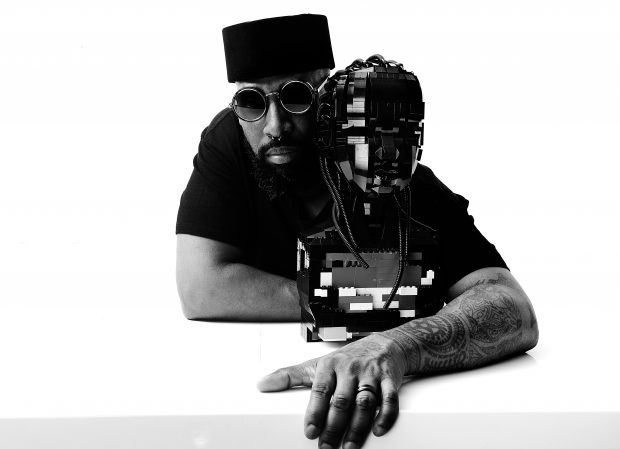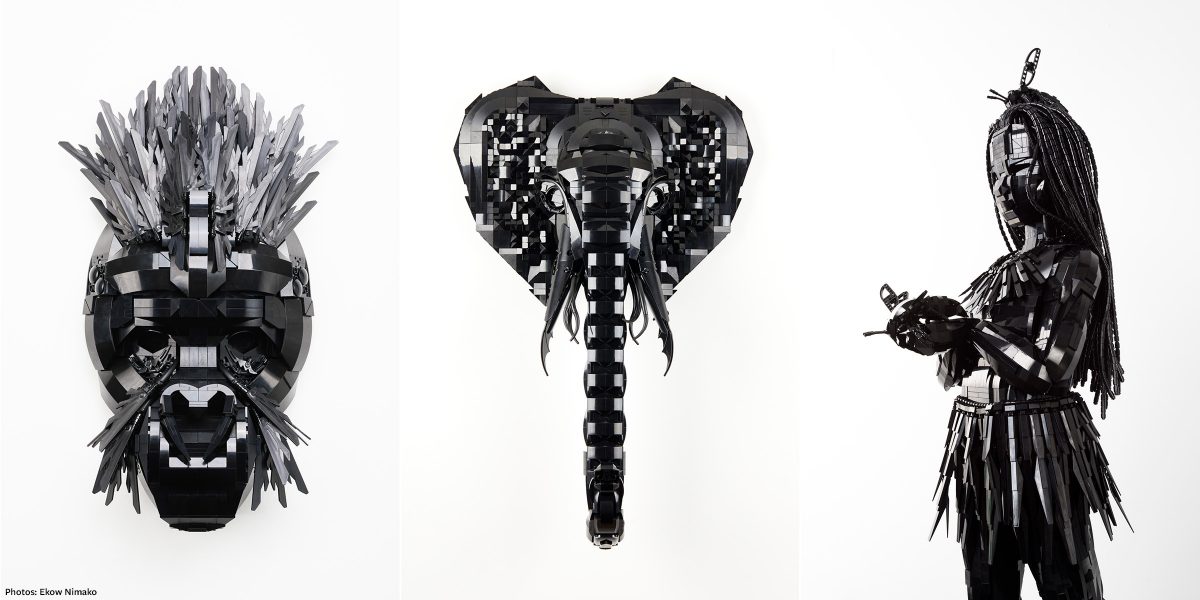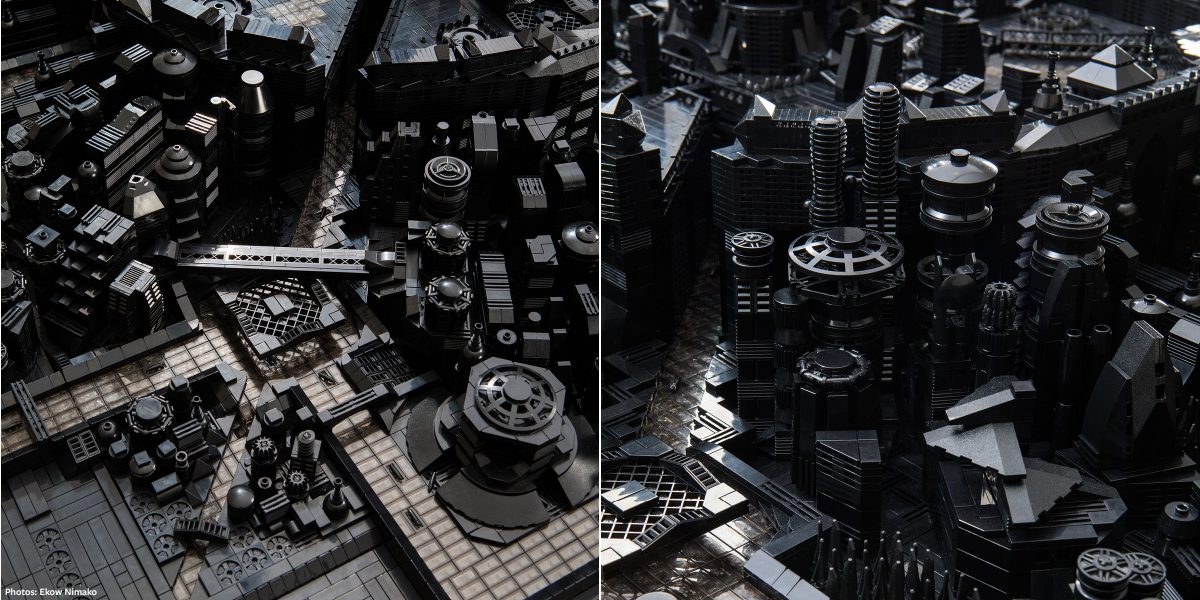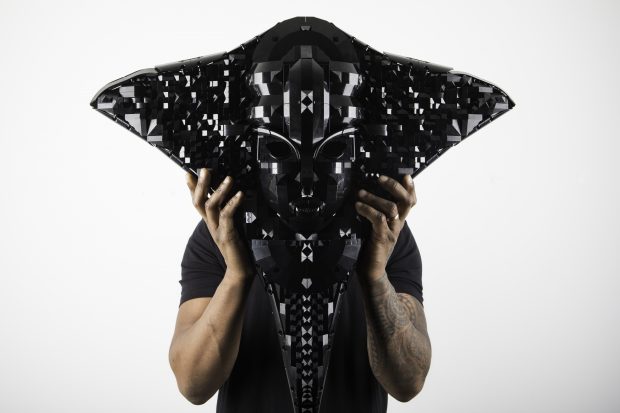Interview: Ekow Nimako’s Afrofuturistic Architecture
Let’s learn more about the talented artist who chose black LEGO bricks as his preferred medium for massive projects like his 100,000-piece exhibition “Building Black: Civilizations.”
It is a great pleasure to share this story on Juneteenth, a day of celebration honoring June 19th, 1865 when slavery was abolished in Texas—more than two years after the Emancipation Proclamation was issued by President Abraham Lincoln. The Juneteenth National Independence Day Act was signed into law just two days ago, establishing Juneteenth as a federal holiday in the United States.
While Ekow Nimako is a Canadian artist of African descent, the history of slavery in the United States is intertwined with that of African people in Canada, including many who escaped slavery through the Underground Railroad.
If you would like to learn more about Juneteenth, you will find extensive Juneteenth resources at the National Museum of African American History & Culture, or this article on Wikipedia.
Introducing Ekow Nimako
Ekow Nimako, a Canadian artist of Ghanaian descent, started using LEGO as his medium in 2012 after studying fine arts at York University in Toronto. Since then, he has had commissions that explore themes of nature and Canadian wildlife — such as “Silent Knight,” a larger-than-life sculpture of the extirpated Ontario barn owl created with about 50,000 white LEGO pieces. His most prolific body of work, “Building Black,” connects strongly to his identity with pieces such as “Cavalier Noir,” an eight-foot-tall galloping unicorn and warrior child rider, composed of all black LEGO elements.
About 100,000 black LEGO elements made up Nimako’s “Building Black: Civilizations” exhibition, created in 2019 for Toronto’s first major institute dedicated to the history and diversity of Islamic art and culture, the Aga Khan Museum. Nimako’s fantastical artworks were a contemporary answer to the museum’s historical exhibit “Caravans of Gold: Fragments in Time.” The largest piece created was a 30-square-foot microscale cityscape called “Kumbi Saleh 3020 CE,” a reimagining of the real-life medieval West African metropolis, set 1,000 years in the future.
Interview with Ekow
As a lover of architectural LEGO models, I interviewed Ekow Nimako via email about “Kumbi Saleh 3020 CE” and the things we have in common: being AFOLs of African descent who love science fiction and black LEGO.
Brick Architect: Adult fans of LEGO (AFOLs) often jokingly call their adult rediscovery of the building toys “coming out of the Dark Ages.” Acknowledging that this is a culturally loaded term (rooted in post-Roman Empire Europe and stereotypes equating darkness with negativity), can you tell us a little more about how you decided to use LEGO as an artistic medium?
Ekow Nimako: I experimented using LEGO for a few art projects in university, but it wasn’t until I saw that Nathan Sawaya and a few others had established careers making large scale LEGO sculptures that I knew it was possible for me. I also knew that if I did it, I would do it differently.
Brick Architect: You are a Black man, and you build large works of art primarily using black LEGO bricks. Can you explain why you decided to do this, and how your art is influenced by the decision to work in just one color?
Ekow Nimako: I use black LEGO for three main reasons:
Part Diversity – LEGO makes almost every part in black, which offers a greater range of possibility and innovation.
Black is an Identifier – When I make faces, creatures, or children using Black LEGO their identity is never in question so it can never be intentionally or unintentionally erased or denied. The living entities I create are undeniably, eternally Black.
I like Black – Black is my favourite colour…or shade…or spectrum. That’s my wave.
Brick Architect: Architecture students and enthusiasts often create models using strictly white LEGO bricks because they claim it puts the focus on “pure form.” What for you is the effect of using strictly black LEGO bricks aesthetically and form-wise? Do black bricks change how the form is perceived compared to a lighter color?
Ekow Nimako: I think when a monochromatic approach is applied the eye will naturally pay more attention to form, which I appreciate. But I think this is the case with any colour. White and black and perhaps grey tones have a particular distinction, however. They each have different effects on the emotions and the psyche when perceived. They are each infinite in their own way.
Brick Architect: Do you have any connections with the AFOL community, such as attending LEGO conventions, reading AFOL blogs/websites, following AFOLs or their groups on social media, watching the “LEGO Masters” TV show, etc?
Ekow Nimako: I appreciate the progress of the AFOL community and I enjoy seeing creations online, though I don’t really consider myself a true AFOL. Not in the “fan” or consumer sense of it at least. I am a geek at heart no doubt. I love Star Wars, sci-fi, Afrofuturism, Transformers, movies and comics to death, but I also don’t take fandom lightly. Just as I am quick to playfully rebuke the unwary socialite who may feign knowledge of the Jedi or Sith for mere conversation’s sake, I won’t claim that I’m a true fan of LEGO. But… I do know it, use it, and most certainly love it.
I don’t really consider myself a true AFOL. Not in the “fan” or consumer sense of it at least.
Ekow Nimako
Brick Architect: Do you have any connections with any other artists who create with LEGO (social media following, blog reading, etc.)? Seen any other LEGO artist’s works in person? Do you have books with LEGO art in your collection, such as the “Beautiful LEGO” series?
Ekow Nimako: I like Mike Doyle’s stuff; the Beautiful LEGO books are dope. I follow a few builders on Instagram too, but I typically roll solo.
Brick Architect: Do you feel isolated as a LEGO artist and AFOL in a culture that has few visible African-descent members? Are you connected to other Black adults who are LEGO lovers?
Ekow Nimako: The isolation I feel as a Black artist is more in relation to how Black people are perceived and engaged in all spheres, globally. As I am not really a part of the AFOL community I don’t feel that particular marginalization, but I know it exists. I don’t need to go to LEGO conventions to know they are likely 95% white. I am connected to other Black artists for sure, but none of them use LEGO. I guess that’s my department.
Brick Architect: I’ve read that popular science fiction franchises such as Star Wars and Transformers, as well as Black Panther (of course), inspire[d] you to create your own visions of Afrofuturism and the Afro-fantastic. Can you talk a bit about that in relation to “Kumbi Saleh 3020 CE”?
Ekow Nimako: I enjoy the architecture of Wakanda in the comics and the Star Wars universe. I employed similar shapes and topography when reimagining Kumbi Saleh. I like how Star Wars in particular blends the fantastical with science fiction, the ancient with the futuristic. Of course, George Lucas borrowed from various ethnic cultures from around the world to craft his epic vision. So when you think about it critically, Star Wars imagery is often our own cultures being filtered through the white imagination — an idyllic landscape in which, I might add, we have been virtually erased, or given marginal character development at best. My vision is to simply create authentic depictions of Black histories, futures, and speculative mythologies.
My vision is to simply create authentic depictions of Black histories, futures, and speculative mythologies.
Ekow Nimako
Brick Architect: As a Black AFOL whose jam is LEGO architecture-size mini- and micro-models, it bums me out that there are very few models out there officially or created by fans (my own creations, or MOCs) of African architecture besides the usual monuments in Egypt (such as this model on Etsy). Have you thought about creating small MOCs and instructions for models of real-life African buildings and monuments and selling them in a book, like with the “Beasts from Bricks” book of animal MOCs you published in 2017?
Ekow Nimako: I was gifted a book on African architecture by a Ghanian architect who visited my exhibition once, and I did consider this a possibility. But it will have to come down to time, and opportunity. The pyramids are a wonder no question, but Africa is so much more than that.
Brick Architect: How do you sort/organize your parts, and acquire LEGO parts for personal or large-scale professional projects like this?
Ekow Nimako: I use Akro-mils or IRIS plastic storage bins; labels are important too. I get 95% of my parts from Bricklink.com. Sometimes I source elements from the local LEGO store.
Brick Architect: Is LEGO strictly a professional medium for you at this point, or do you still like to “play” with LEGO either by building official sets, or smaller personal projects? If so, what are your favorite themes to build in?
Ekow Nimako: Unfortunately, the demands of my professional art practice limit my time to just free-play or geek-play. I did make a pretty sweet Bumblebee [Transformer character] after the movie came out. I was going to make a Shatter [Transformer] too but…time. Maybe one day.






